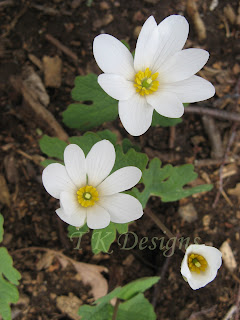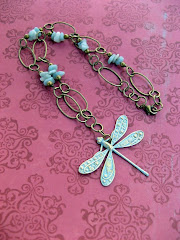Viola pubescens
This week, most of the violets are blooming along our woodland path. Violets have always enchanted me since I was a little girl. I remember collecting all the beautiful purple/blue flowers into little bouquets before the lawn would be cut! They were so delicate! As I spent more and more time in the woods hiking, I happily discovered that there were many different colored violets!
Viola sororia (the white form)
When my husband and I moved into our home and created our woodland path, one of my goals was to start collecting a variety of violets. Right now I probably have 6-8 different varieties that I slowly gathered from friends yards and native wildflower sales.
Common Blue Violet- Viola sororia
Although there are so many different flowers in bloom this week, I thought I would concentrate on these little beauties! Many people take violets for granted and don't really stop and enjoy these delicate flowers. The common blue or white violet can become a nuisance, popping up in little colonies in your lawn, but the next time you see them, stop and take another look. Better yet, make yourself a little bouquet! They are so charming in a little vase! You'll be amazed at their beauty!
I like to make little bouquets with some of my violets. My yellow violets haven't spread enough for me to want to steal a flower or two, but I'm sure next year I will be enjoying them in my little vases too!
Hairy Violet -Viola hirta
Hairy Violet -Viola hirta
The violet is New Jersey's State Flower! It is also the state flower for Wisconson, Illinois, and Rhode Island.
I'm not sure what the name of this was, but it is a beautiful reddish purple color, very striking when its mixed with the other violets.
Sweet White Violet - Viola blanda
These small violets are very fragrant. They grow to a height of 3-5". Their shiny dark green leaves and flowers are on separate stems.
-
'Freckles' Violet - Viola sororia 'Freckles'
Did you know that violet leaves are rich in vitamins A & C? Believe it or not, you can add them to your salads, cook them as greens (like spinach) or garnish cold soups. Their flowers are also edible, and can be made into candies and jellies!! I believe Martha Stewart explains how to sugar them and add them to cakes for edible decorations. They can also be used to decorate pastries, and fruit desserts. Just remember to only eat plants that were not sprayed with pesticides. If you chemically treat your lawn, you may not want to go grazing on it!!
Their fragrance can be extracted by steeping their flowers and leaves in water until it smells fragrant. This Violet Water, can then be used in teas, scent bedding or clothing (if rinsed or sprayed with it), and scent or flavor many other wonderful products.
Violets have also been used for medicinal purposes such as treating headaches, colds, coughs, sore throats and constipation.
Small grouping of violets along the path.
PS Through the years I have lost many of the exact names of these flowers, so a few may be misnamed by me. Hopefully with a little more research I will be able to verify that these are accurately named!
Have you done anything special with violets? I'd love to hear from you!
Have you done anything special with violets? I'd love to hear from you!
























































